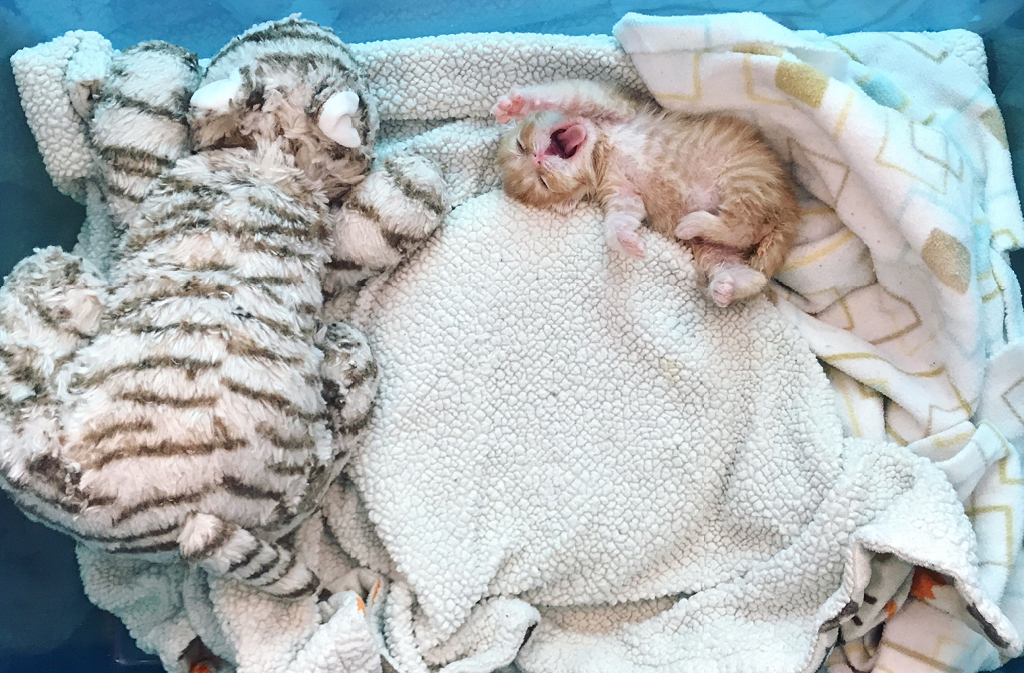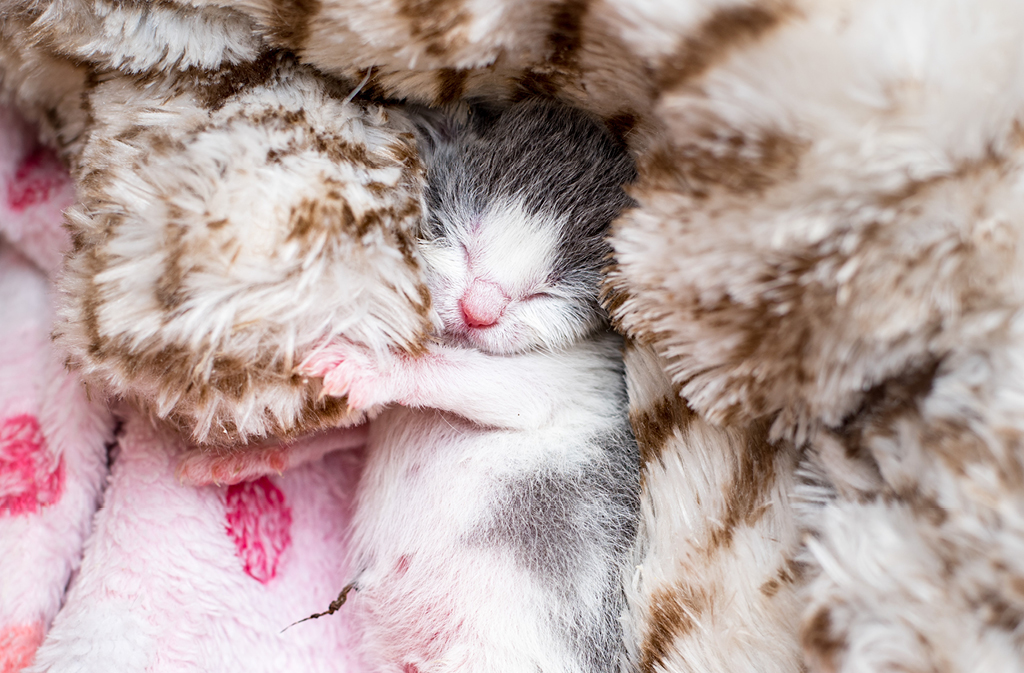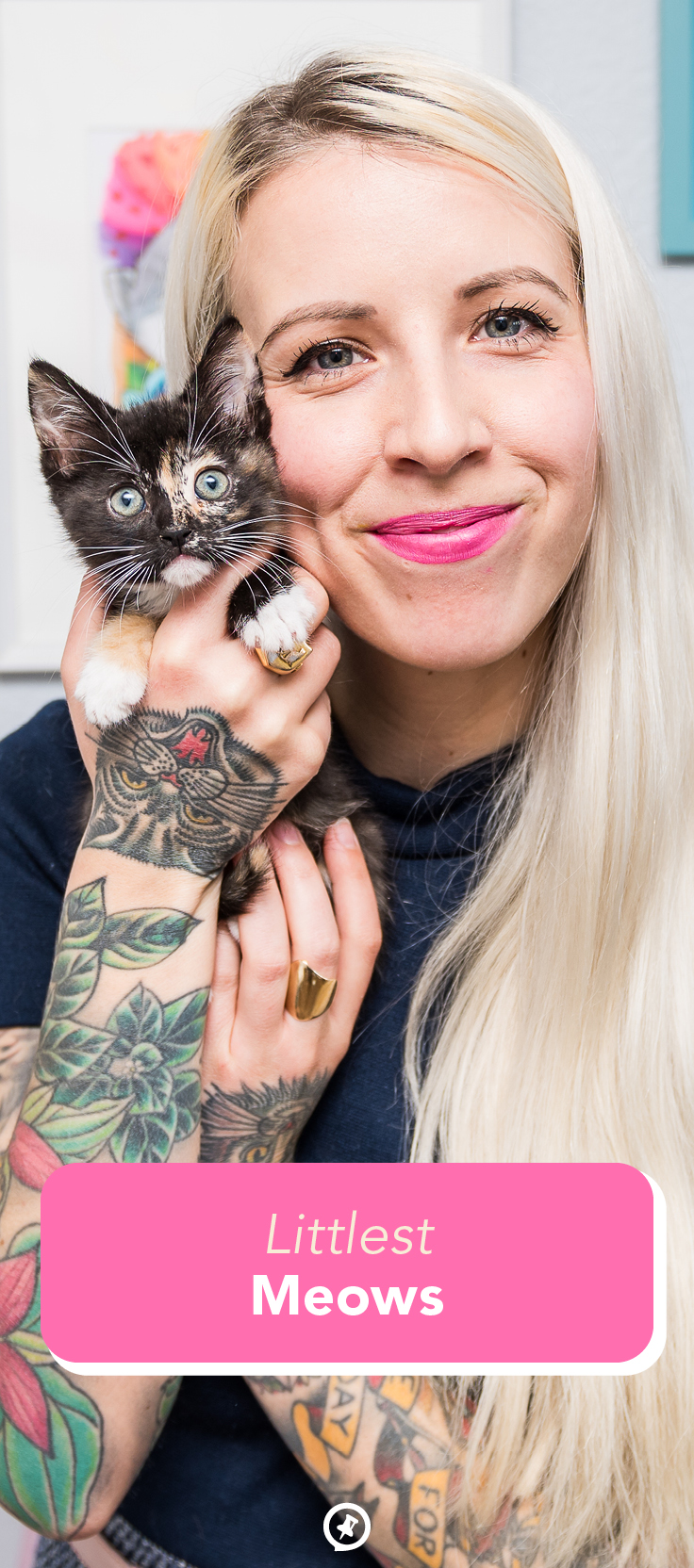Littlest Meows
Interview with Hannah Shaw
photography by Hannah Shaw and Andrew Marttila
Hannah Shaw started out rescuing neonatal kittens and ended up falling into a full-time job of teaching others how to do the same.
Where do you live?
I live in San Diego, though the work I do is national. San Diego is beautiful, has good resources for kittens, and has some of the highest volume of kittens anywhere in the country because it’s so warm. Kitten season is actually regional because the reproductive cycle is affected by the climate and seasons.
How did you get dubbed Kitten Lady? Why did you start this work?
When I started rescuing kittens fourteen years ago, I became the person to call if you found a neonatal (zero-to-eight-week-old) kitten. People would say, “Oh, you should call that kitten lady,” and it stuck. I started the work because there were no resources to teach me how to save kittens; I learned through other people and immersion. Most foster programs for neonatal kittens have popped up recently. Even five or six years ago, they were rare. As I’m learning, I like to teach others to bring them along so they can also get involved in fostering kittens.
Who is Coco, and why is she so important?
Coco is my thirteen-year-old cat and the first kitten I ever found outside. Back then, I was an animal lover but not a cat person. I somehow spotted her in a tree in Philadelphia, even though she was a black cat in a shady tree. I climbed up and got her down. And that was when I learned there were no resources for kittens in shelters. I took care of her somehow. Then I started finding kittens everywhere, and people started calling me.

What did you do before becoming Kitten Lady? When did your career shift?
Before this, I worked in nonprofit for animal welfare. When I first started doing Kitten Lady things, I never thought it could be a job. But I was doing consulting work at the time and was getting invited to give talks about kitten care and getting hired to do small writing projects. My partner, Andrew, urged me to try it for a few months and see if there was enough for me to do. That was six and a half years ago. Once I began putting myself out there, it instantly became a job. I discovered I wasn’t the only person who wanted to help kittens but didn’t have resources. My mom always said, “Find a problem that no one has solved yet, and work on solving it.” I’m so proud that I can dedicate my life to solving this problem.
You’ve also written extensively about this subject. Did you envision being an author?
I always wanted to write. In fact, when I first started doing this work, I was also into bookbinding, and I bonded a book and put a cat on the cover. I then added everything I learned in the first seven years of caring for kittens in it. The manuscript for my first published book, Tiny but Mighty, came directly from the dozens of videos and articles on my website. I have five books out now—the literary bug bit me hard.
Why are neonatal kittens such an underserved population?
Animal shelters have operating hours. Since neonate kittens need specialized, overnight care, the only option is foster care. From birth to five weeks, they are still nursing and need bottle feeding. At five to eight weeks, kittens are weaning and becoming more independent. At eight weeks or older, they are spayed or neutered. Between eight and nine weeks is when most organizations adopt out kittens.

What do you love about your work?
I love everything I do. I’m never bored. I like that I always have the opportunity to grow. My work allows me to stay curious about what is possible. I mostly take on very strange medical cases as far as hands-on work. For example, I have a kitten with a severe cleft palate named Chouchou. He is almost six months old (and made it longer than the vets thought), so now he can get surgery.
I like working with other creative and compassionate people and trying to come up with innovative solutions
to individual and systemic problems kittens face. Interestingly, vets don’t learn much about neonate kittens, so I get hired to teach at vet schools. I’m currently piloting a research program with the UC Davis vet school. I’m excited to illuminate the vet field on issues these kittens face.
Where do you foster the kittens?
We have a house in the country, and next door is the clubhouse. In our home, we repurposed one of the rooms to be a kitten nursery for neonates. There are three incubators as well as metal tables from industrial kitchens that have storage underneath. Everything is very sanitary. There is also a large glass playpen for kittens once they can leave the incubators. Once they are old enough (six to ten weeks) and healthy enough, they go to the playpen. It’s like Disneyland for kittens. They socialize with other kittens and gain more weight, and we have volunteers who help them out.
What is something you caution new foster parents of kittens about?
When you get into kitten rescue, you realize how great of a need there is. And you’ll want to take on too much. I’m a big advocate of a sustainable approach to rescue. Even if you foster once a year and that’s your gift to kittens, that’s still amazing. I wish we could be a society that doesn’t see things so all-or-nothing. You don’t need to have fifty kittens to make
a difference.

Tell us about the Orphan Kitten Club:
It’s my nonprofit, which serves three primary functions: nursery services and foster homes; Mighty Cats, which provides grant funding to our partner organizations throughout the country; and Full Circle, a program committed to sterilizing the family groups so feral cats don’t continue to reproduce. For every kitten we save, that shelter must share the address where the kitten was found so we can find the family group. And then we go to that address and start talking to people. It’s community building. People think of cat people as isolated and introverted, but to solve this problem, you must be out there talking to people.
What is the biggest takeaway from your success?
Anyone can do this! This is a very heavy, complicated, sad situation with a very simple solution, which is empowering everyday people to go to their local shelter and babysit some fluffy kittens. And if you sign up with a shelter, they will provide all the supplies. They’ll also coordinate medical care and find an adopter.
What are your hopes for the world of kitten fostering in five years?
Right now, there are more kittens coming in than helpers. I’d love for that to be reversed. Everybody doesn’t have to do everything, but if everybody does a little bit, then together we can do a lot. It’s very empowering to foster kittens. When people foster, they realize how capable they are of changing the world.
For more info, visit kittenlady.org






















